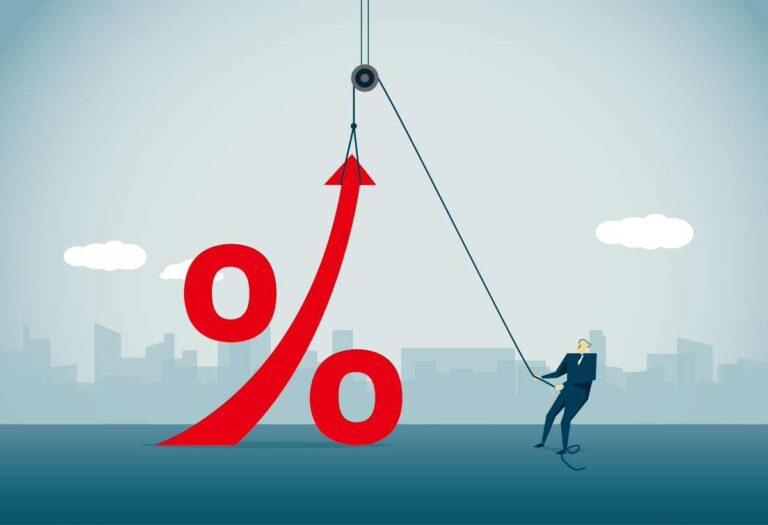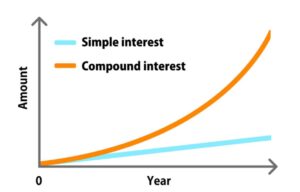Interest rates: meaning, types and more

Interest rates are one of the fundamental concepts of finance that impact the economy and our daily lives. Interest rates are the cost of borrowing or the return on investment, and they influence the level of investment, inflation, and economic growth.
This article aims to provide a comprehensive understanding of interest rates, their types, and their role in the economy. It also discusses the role of central banks in setting interest rates, the impact of interest rates on borrowing, and the effect of inflation on interest rates.
What are interest rates?
Interest rates are the cost of borrowing or the return on investment, usually expressed as a percentage of the principal amount. It is the amount charged by lenders to borrowers for the use of their money. Interest rates can be applied to a wide range of financial products such as loans, credit cards, mortgages, and savings accounts.
In the case of loans and credit cards, interest rates are charged on the amount of money borrowed and added to the outstanding balance. On the other hand, for savings accounts and other investments, interest rates are the return that investors receive on their investments.
Interest rates are influenced by a variety of factors, including economic conditions, government policies, and the supply and demand for credit. In general, interest rates tend to rise when the economy is growing and fall when it is slowing down.
Different types of interest rates and their definitions
There are various types of interest rates, each with its own definition and purpose. The most commonly used types of interest rates include:
1. Nominal interest rate
The nominal interest rate is the stated rate of interest on a financial product. It does not take into account the effects of inflation or compounding, and therefore does not reflect the true cost of borrowing or the real return on investment.
2. Real interest rate
The real interest rate is the nominal interest rate adjusted for inflation. It represents the true cost of borrowing or the real return on investment. Real interest rates are important because they reflect the purchasing power of the borrowed or invested money.
3. Effective interest rate
The effective interest rate is the true cost of borrowing or the real return on investment, taking into account compounding. It reflects the total amount of interest paid or earned over a specific period, including any fees or charges associated with the financial product.
4. Prime rate
The prime rate is the interest rate that banks charge their most creditworthy customers. It serves as a benchmark for other interest rates, such as those on mortgages and loans.
5. Federal funds rate
The federal funds rate is the interest rate that banks charge each other for overnight loans. It is set by the Federal Reserve and is used to control the supply of money and credit in the economy.
Understanding the different types of interest rates is essential for making informed financial decisions. It helps borrowers and investors to determine the true cost of borrowing or the real return on investment, and to compare different financial products.
Factors that impact interest rates
Interest rates are influenced by various factors, including economic conditions, government policies, and the supply and demand for credit. Some of the key factors that impact interest rates include:
- Inflation: Inflation is the rate at which the general level of prices for goods and services is increasing. When inflation rises, lenders demand a higher interest rate to compensate for the reduced purchasing power of the money they lend. This is because inflation reduces the value of the money that is repaid in the future.
- Economic growth: Economic growth is the increase in the production of goods and services in an economy over time. When the economy is growing, demand for credit increases, causing interest rates to rise. Conversely, when the economy is slowing down, demand for credit decreases, causing interest rates to fall.
- Government policies: Government policies, particularly monetary policy, can have a significant impact on interest rates. Central banks can influence interest rates by adjusting the supply of money and credit in the economy through open market operations, reserve requirements, and other policy tools.
- International factors: Interest rates are also influenced by international factors such as exchange rates and global economic conditions. For example, if a country’s currency is weakening, its interest rates may rise to attract foreign investment and support the currency.
- Credit Risk: Lenders also consider the creditworthiness of borrowers when setting interest rates. Borrowers with a high credit risk, such as those with a poor credit history, may be charged a higher interest rate to compensate for the risk of default.
The role of central banks in setting interest rates
Central banks play a crucial role in setting interest rates. In most countries, the central bank is responsible for implementing monetary policy and controlling the supply of money and credit in the economy. The central bank uses various policy tools, such as open market operations, to influence interest rates.
The central bank sets a target for a short-term interest rate, such as the federal funds rate in the US or the Bank of England base rate in the UK. The central bank adjusts the supply of money and credit in the economy to try to achieve this target rate. For example, if the central bank wants to lower interest rates, it can increase the supply of money by buying government securities, which increases the amount of money in circulation and lowers the interest rate.
The central bank’s decisions on interest rates can have a significant impact on the economy. Lower interest rates can stimulate borrowing and investment, leading to increased economic growth. However, low-interest rates can also lead to inflation and asset bubbles, which can cause long-term damage to the economy.
Conclusion
Interest rates are a crucial element of finance and the economy. They have a significant impact on the cost of borrowing and the return on investment, which in turn affects the level of investment, inflation, and economic growth.
It is determined by supply and demand for credit, inflation, central bank policies, and the perceived risk of the borrower defaulting.
Understanding the different types of interest rates and the factors that influence them is essential for making informed financial decisions and predicting economic trends.
Don't miss a thing. Follow us on Telegram and Follow us on WhatsApp. If you love videos then also Subscribe to our YouTube Channel. We are on Twitter as MakeMoneyDotNG.





